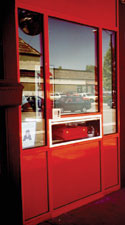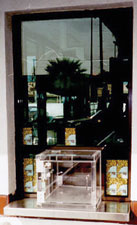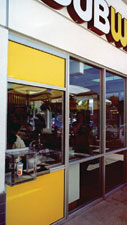Designing Bullet Resistant Protection Panel Systems: Capture More than the Imagination
Material Limitations Effect Specifications and Delamination Performance
It is desirable to specify panels that carry a minimum of a One-Hour Fire Rating per ASTM E119-98 or ASTM E119-00 as these panels have been treated with a thirty percent mixture of Calcium Carbonate or Calcium Sulfate in the resin matrix. Such mixtures not only provide the fire rating but also greatly improve the delamination process.
Fiberglass that has been treated with starch oil should be avoided as starch oil by nature is a hydroscopic material and tends to attract moisture, which leads to faster degradation of the panels. Starch oil fiberglass panels should not be used in an outdoor environment as they will attract moisture and soon lose their structural and anti-ballistic integrity.
Lastly and perhaps most important is the need to only specify fiberglass panels that are UL Listed by Underwriters Laboratories according to the test criteria of the UL752 Standard (Tenth Edition, March 10, 2000) This will ensure the highest quality and the best anti-ballistic performance for the security design.
Bullet Resistant Fiberglass is a fiberglass-reinforced resin. The material is manufactured by mechanically injecting starch-oiled woven, ballistic grade fiberglass cloth with a thermo set polyester resin. The impregnated cloth is placed in a hydraulic hot press and pressed into flat rigid sheets.
Fiberglass is used on walls, ceilings and even floors to protect against bullet penetration. It is an opaque material that is subject to the same standards and tests, under UL-752, as the transparent material. Fiberglass is only a fraction of the weight of steel. It can be cut on the job if necessary to ensure a perfect fit. Fiberglass is used to fortify judge's benches, witness boxes, walls, doors, counters or any area requiring a lightweight bullet resistant barrier.
 Pizza Hut |
 McDonald's |
 Subway |
Walk-up Take Out Windows |
||
When used in new construction, it is recommended that butt joints have a 4-inch wide batten strip backing the same product. That provides a 2-inch overlap in either direction to insure the integrity of the protection level desired. This material is very applicable to retro security installations because it is easy to cut and does not add much weight to the floor loads of an existing structure that a steel fabrication might add.
|
||||||||||||||||||||||||||||||||||||||||||||||||||









